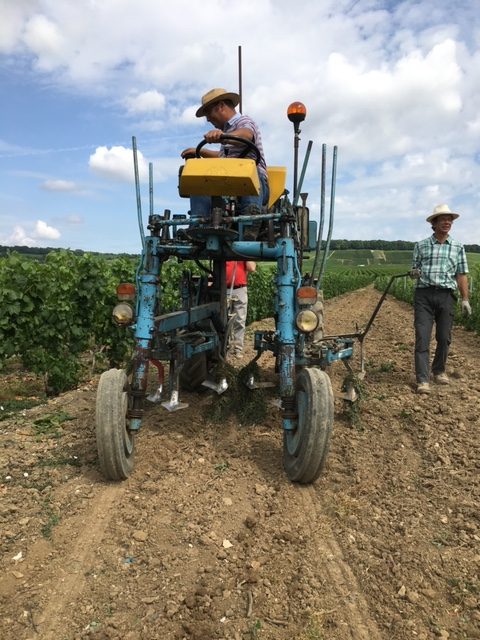The cultivation of the vine
The aim of vine growing is to make the most of the vine’s productive capacity while maintaining its long-term viability.
The goal is to achieve a balanced result between quality, always a priority, and quantity; both must contribute to the prosperity of the wine grower within the region’s wine economy.
Growing practices must take into account the experience of previous generations of wine growers and the regulations in force. Being vigilance against the vine’s enemies (diseases and pests) and preventing accidents is of paramount importance as the potential damage can affect the production and compromise the very life of the vine.
Working the soil
Over the past 10 years, we have become closer to our terroir again through the practice of ploughing. This allows us to master the grass and weeds that compete with the vine and harm its growth, in a more environmentally-friendly manner. Because, although weed killers are able to destroy weeds, they also kill microorganisms and soil life.
Ploughing, well done, improves the aeration of our soil, its physical structure and the penetration of water. It promotes biodiversity, which in turn improves the nutrition our vineyards receive.
Light ploughing also allows us to cut away the vine’s superficial surface roots and thus encourages the vine’s deep rooting.
These practices stimulate the life in the soil and allow the terroir to express itself, to the great delight of wine lovers.
The wines become fresher and livelier and, above all, more complex, and this allows us to reduce the amount of liquor (sugar) and produce a wine in which each aroma is precisely defined.
Our champagnes set themselves apart thanks to their distinctive identity, from the terroir of the Côte des Blancs.
Growing our vines naturally requires us to employ more people per hectare who, through their careful, high-quality work, help us to keep the vineyards in an excellent condition of health which enables the grapes to ripen perfectly.
